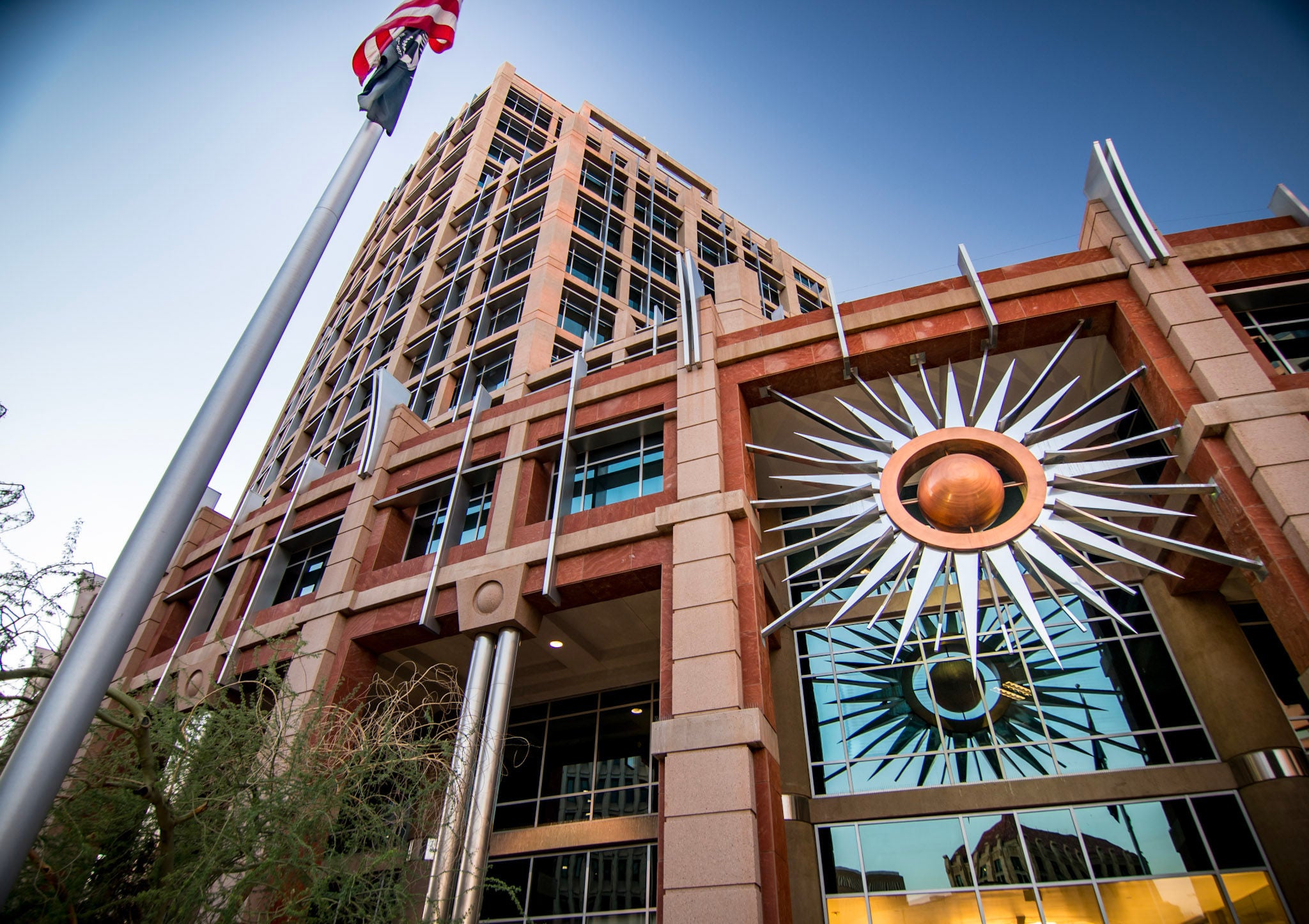Phoenix launches a Citywide food drive to assist residents experiencing food insecurity during the holidays.

Overview
The City of Phoenix Planning & Development Department is dedicated to shaping the future of Phoenix as partners in planning, preserving and developing a safe, vibrant and well-designed city.
Our mission is to preserve, shape and build Phoenix through outstanding service, engagement and innovation.
Our service commitments:
S - Serve as a leader to develop a city through continuous advancement of policy, codes, processes and technology.
E - Ensure building safety, preservation and planning are at the forefront of all we do.
R - Reinforce a culture of respect and collaboration.
V - Value and deliver personal, seamless and innovative service.
E - Empower a professional, proficient and dedicated department of civil servants.
View our 2025 Process Improvements Report here!
Interested in learning more about our process improvements? Connect with our department and share your feedback at one of our upcoming listening sessions!
PROPOSED PLANNING AND DEVELOPMENT USER FEE INCREASE
The City of Phoenix intends to consider an increase to certain Planning & Development Fees prescribed under Chapter 9, Appendix A.2 and certain Fire Prevention Fees prescribed under Chapter 15, Fire Prevention Code on or after December 17, 2025.
Quick Links
This section provides easy access to essential tools and information for navigating local planning processes.
-
Electronic Plan Review
Information about the systems and guidelines involved in electronic plan reviews
-
Building Construction Codes
Building codes are published to meet the needs of local jurisdictions charged with enforcement of building standards for construction and use.
-
My Community Map
Information contained in city maps is derived from digital databases maintained by various third-party agencies at the County, State, and Federal level
-
SHAPE PHX Portal
Apply for a permit, license, zoning application, code modification, and more.
-
Public Records
Discover how to access City of Phoenix public records from across the City's departments and functions.
-
Signs
Learn about Phoenix's commercial plan reviews and permits for signs.
-
Technical (TRT) Documents: Policies, Processes, Interpretations
Explore TRT Documents for comprehensive policies, processes, and interpretations essential for planning and development in Phoenix.
Department Initiatives
Learn about some of our programs and initiatives.
-
-
Downtown Strategic Plan Update
Explore how the City, in collaboration with various community stakeholders update and refine the existing plan aligning with the 2025 general plan.
-
General Plan
Explore Phoenix's General Plan 2025 for insights on urban planning and zoning strategies shaping the city's future development.
-
Green Stormwater Infrastructure
Green Stormwater Infrastructure refers to infrastructure constructed with natural or eco-friendly materials to reduce flows to the public storm drain system.
-
Office of Customer Advocacy
Learn how the Office of Customer Advocacy supports your development journey with expert guidance and resources. Start your project with confidence.
-
RIO PHX
Explore Rio PHX's innovative plans and studies for sustainable urban development in Phoenix. Discover how we're reimagining the future of our city.
-
Preserve Historic PHX
Learn about the 2025 update to the comprehensive Historic Preservation Plan
-
Transit Oriented Communities
Explore Phoenix's Transit Oriented Communities for sustainable urban development, enhancing connectivity and livability in vibrant neighborhoods.
Contact the Planning and Development Department
200 W. Washington St., 2nd Floor
Phoenix, AZ 85003
Phone: 602-262-7811
Email: pdd@phoenix.gov
The Ombudsman Section is here to help with your development project.
Need to reach a supervisor? View the section supervisors contact list.